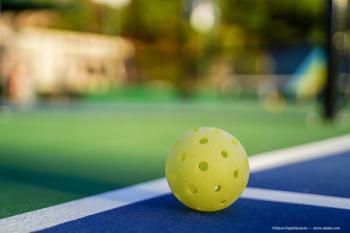
Atropine offers similar results to patching for amblyopia
Baltimore—Substantial improvement in visual acuity occurred in the amblyopic eyes of children in both treatment arms of a study comparing atropine and occlusive patching, said Michael X. Repka, MD.
"Pharmacologic treatment is an effective means of treating moderate amblyopia when compared with patching after 2 years of follow-up," said Dr. Repka, professor of ophthalmology and professor of pediatrics, Johns Hopkins University School of Medicine, Baltimore. He added that atropine is not FDA-approved for the treatment of amblyopia.
Patching with an occlusive patch has been the gold standard of therapy for amblyopia in North America for more than a century. Pharmacologic penalization with a cycloplegic eye drop that dilates the pupil and blurs the image seen by the unaffected eye has long been considered an alternative but is generally regarded by experts as a poor second choice, Dr. Repka said.
Between April 1999 and April 2001,419 children under the age of 7 years entered the trial; the average age at enrollment was 5.2 years. The group was 47% female and 53% male; 83% were white.
Visual acuity testing was performed at enrollment and at outcome using the same testing strategy, single-surrounded HOTV optotypes. Only patients with amblyopia from strabismus or anisometropia were included, so the results do not apply in deprivation amblyopia, Dr. Repka said.
"Furthermore, the acuity of the amblyopic eye ranged only from 20/40 to 20/100. Although that represents 75% of the amblyopic population, these results cannot necessarily be generalized to children with more severe amblyopia," he added.
A total of 215 children were randomly assigned to receive patching and 204 to receive atropine eye drops. Children in the medication arm received one drop of atropine 1% ophthalmic solution once a day. If the treatment was not successful by the 4-month or 17-week point, a plano lens was substituted for the hypermetropic correction worn before the sound eye for the final 2 months of the primary treatment interval.
The patching treatment initially was 6 or more hours a day at investigator discretion. If that treatment was unsuccessful at 17 weeks, the patient was asked to wear the patch during all waking hours for the remainder of the primary treatment interval.
Randomized treatment continued through the first 6 months of the study.
"Because we did not know the results of the 6-month outcome when the study was designed, treatment from 7 to 24 months would be at investigator discretion in the protocol," Dr. Repka said.
At 6 months, 97% (n = 208) of the children in the patching group and 95% (n = 194) in the atropine group had completed outcome examinations. At 2 years, 87% of the patching arm (n = 187) and 86% (n = 176) of the atropine group had completed outcome examinations.
Both groups had the same entrance visual acuity, and they had similar outcomes at 6 months. The group that underwent patching had a visual acuity of 20/30, while the atropine group had a visual acuity of 20/30-2, a clinically insignificant difference.
Early in the study, the rate of improvement in the patching arm was faster than in the pharmacologic arm.
"Within 5 weeks their vision had improved to 20/40 on average compared with 20/50+1, but by 6 months that difference had essentially disappeared," Dr. Repka said.
Newsletter
Don’t miss out—get Ophthalmology Times updates on the latest clinical advancements and expert interviews, straight to your inbox.



















































.png)


